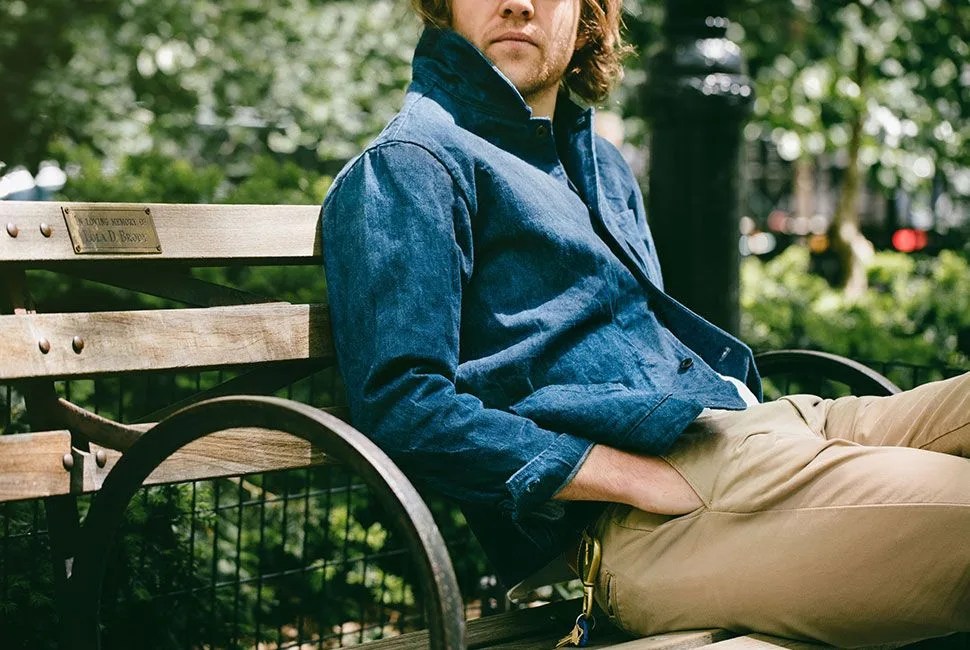An August drive through California’s Central Valley in a car without air conditioning is a study in perseverance. Driving toward the Bay Area through Northern California, the first respite is a high hill on I-80 between Fairfield and Vallejo, where one can see the fog-clad peninsula of San Francisco and feel the Pacific breeze blowing across the bay. After crossing the bridge, the sweat-soaked hours through farmland are forgotten as air temperatures drop into the 50s and thick blankets of fog block out the sun. It was for summer evenings like these, wrapped in the dewey, chilled air of the city, that Evan Kinori designed the Three Pocket Jacket.
Kinori, a San Francisco-based designer, took inspiration from century-old European work jackets when designing his Three Pocket Jacket, incorporating curved collar tips, engineer cuffs, a slightly angled pocket and a cutaway hem. Kinori is offering the jacket in a Japanese, light-indigo selvedge denim this summer. “Part of what excites me is taking an iconic style and twisting preconceived notions by playing with textile choice,” he said. “Every fabric has such a personality and history; we often have a whole set of assumptions about different cloths and it’s fun to play with that. The same jacket can take on a whole new life when cut from denim, melton wool, or the right linen.”
“I think it’s incredible how products can represent so much to people and can take on layers of meaning and emotion. My highest goal would be to make pieces that someone feels strongly connected to.”
After going to school for apparel design and pattern-making, Kinori practiced his craft at a small custom jean workshop, focusing on single-needle handwork in an environment that scorned machine automation. After a few years of prototyping different garments for personal use, he launched his own brand in September of 2015 with a focus on value and wearability. “Since the DNA of my product is rooted in really quality, non-automated sewing construction, nice textiles from reputable mills, US-made hardware and labels — the price can rise pretty quickly,” he said. “For me this means I have to push myself to think about the wearability and durability in terms of design and construction. They’re not cheap clothes by any means, so that means my job is to make them suited for daily wear — not too loud or gimmicky in their design, and the sewing has to be ready to endure heavy use.”
Up until this point, all of Kinori’s garments have been made in San Francisco. For the next run of jackets, he has decided to work with a shop in L.A. that’s run by a father and son. “San Francisco just doesn’t have a garment industry anymore, and if you’re making well-sewn garments on a small scale, you really need a small factory that sees how much you care about your product, respects that and wants to do a good job.”
Though production has moved down the coast, Kinori doesn’t have plans to follow any time soon. San Francisco’s culinary scene, varied topography and range of architecture are endearing, but it’s the climate that most captivates Kinori. “The weather allows me to skateboard, ride a bike and wear jackets year-round,” he said. In his studio, quality of materials and construction may be key to the design process, but the far less tangible element of nostalgia is also a key player. “I think it’s incredible how products can represent so much to people and can take on layers of meaning and emotion. My highest goal would be to make pieces that someone feels strongly connected to.”
